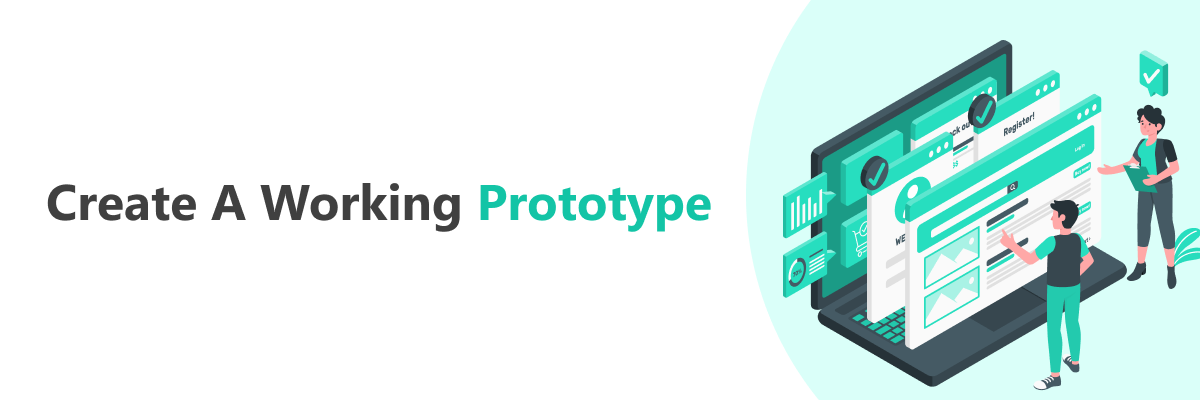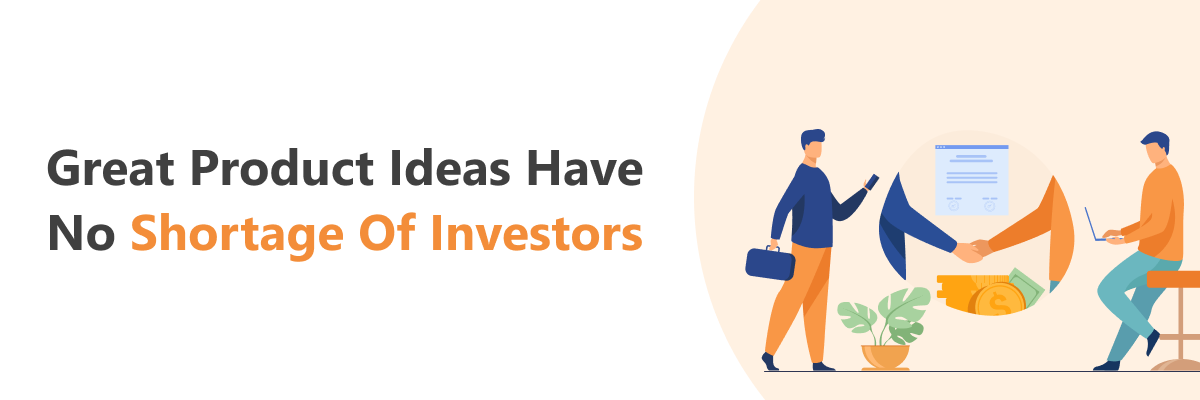Do you have a scalable product idea?
Hey, that’s great!
It’s not easy to find good invention ideas for tech startups that are also scalable in the long run.
Now, what do you do with an idea?
In this blog, we’ll tell you how to make an invention come to life and also answer the pertinent questions that you’ll most likely have, such as:
-
-
- Can you patent an idea, something that is intangible?
- Is your idea good enough to hold its own once you turn your invention idea into a profitable product?
- Are you ready to start your own business?
-
In a nutshell, we’ll show you how to turn an idea into a product.
Let’s plough ahead!
1. Write Down Your New Invention Ideas. All of Them!
Every time you think of cool invention ideas , jot them down immediately! It doesn’t matter whether they’re going to hit the market as successful products someday!
You’ll never know for sure which of your many ideas will turn out to be the million-dollar one until you’ve done the proper feasibility studies. And, if you don’t write them all down, you might lose your golden ticket in the hustle and bustle of your eventful life.
So, irrespective of how feasible your idea might turn out to be, you need to make a habit of noting down your creative thoughts and ideas as soon as they cross your mind. Do not wait till they flutter around for a bit and then exit your consciousness.
2. Check the Feasibility of Your Invention Idea

Once you have a platter of ideas to choose from, take some time to research and come up with an idea that truly stands out.
Now, this is a time-consuming process that must be done diligently as proper research will form the foundation of your startup business.
You’ll need to check various aspects such as market trends, competitor analysis, and user expectations to see if your product idea is feasible.
Financial projections are also an important area you need to focus on. Is your invention idea capable of transforming into a profitable product under the right conditions? If not, scratch it out and start over.
To understand how to go about your research process, read our blog on the different types of research and research methodologies required to launch a successful startup.
3. Ask Around to Validate Your Idea
Reinforce your idea before you go ahead and come up with an action plan.
Your invention idea may look good to you on paper, but will it hold up against peer scrutiny?
Talk to other experienced professionals and startup founders to see if they also think your idea has merit. This is important as it gives you a fresh perspective into the scope of your product idea.
-
-
- How feasible is it?
- How marketable is it?
- How desirable is it?
-
Sometimes, we’re too close to the picture to judge it correctly. So, take a step back and weigh the pros and cons of your invention idea with reliable people. The feedback you will get is extremely valuable, so be open-minded and ready to accept constructive criticism.
4. Put Together a Skilled Team

“I have an idea for a product! I can do this by myself!”
Wrong attitude, amigo!
You will need the right team backing you to help you turn your idea into a desirable product. To hire the right team, here are some important things to consider.
No one in history has managed to create history without the support of a hard-working and determined team with a goal-oriented mindset.
Your team will need great developers (Psst! Here are some pointers on how to find the best web developers and where to find them!) and efficient managers.
You should also make an effort to build a team whose members complement each other. Try to get a variety of talent, with each member bringing some unique skill set to the table.
Alternatively, you can choose to outsource your product development to trusted tech partners, and focus solely on growing your business presence in the marketplace. Here are some of the IT outsourcing models you can choose from.
5. Raise Funds to Start Your Product Development Cycle
First things first, you’ll need money. And lots of it.
There will be staff to feed and bills to pay and advertisements to run.
But, during the initial stages of your entrepreneurial journey, you can get by if you manage to scrape together enough money to get together a small team and create a good prototype.
Of course, if you can get more funding, then well and good! You’ll definitely need it once your product is ready for launch. This is because once you determine the right time to launch your product , you’ll have to spend a good amount on marketing your brand.
Hold your horses, we’ll get to that point in a minute!
6. Create a Prototype and Test It

Prototype development is a very important part of your product development cycle and it comes with numerous benefits.
Consider this scenario.
You have an idea for an invention. It’s pretty brilliant, actually! And you can make a profitable product out of it. Somehow, your competition gets wind of it and beats you to the punch by launching a similar product before you’re ready with your own.
That would be infuriating, wouldn’t it?
Now, this wouldn’t have happened if you had patented your idea. And patenting an idea takes more than patent searches (a list of patents that are already in circulation) and patent applications.
You will need a prototype.
Prototypes also come in handy when it comes to bug fixing, understanding the predilections of your target audience, and even wooing investors!
Take a look at the numerous reasons you need to create prototypes for your invention ideas.
7. Can Your Invention Idea Be a Profitable Product?
Your target audience is your ultimate evaluator. Will you pass or will you fail as a startup?
Use your prototype to slowly test the waters and check how well people respond to your product idea.
The benefits are two-fold.
Your audience will tell you what they like and what they don’t like so that you can hone your final product in accordance with your user expectations.
You can also use this as an opportunity to get your target audience accustomed to your product and its features. By the time you’re ready to launch your final product, your audience will be ready to accept it with open arms (provided your product is a good one, of course!).
It’s a good idea to implement feedback loops that will help you stay connected to the needs and expectations of your audience.
8. Get Investors to Back Your Invention Idea

Investors have money. You need money. Now, convince them to invest their money in your product idea.
If your product idea is brilliant and you have a prototype to back it up, more than half your work is done! Even better, if you already have an MVP (Minimum Viable Product), then your investors can see for themselves how much traction (paying customers who are interested in your product) your product gets!
Put together an investor pitch deck that you are proud of. It should comprise all the relevant details such as your mission, company vision, your product idea, your team, market opportunities, and financial projections.
Also prepare a great elevator pitch that summarises all main points of your presentation well. Who knows! You might run into your next big investor in an elevator and have 20 seconds to make your case!
Take a look at the main questions you’ll need to address with investors before they decide to invest in your startup.
9. Kick Your Product Development Process Into Full Gear!
You have the vetted product idea, a skilled and efficient team, and a working prototype.
Armed with the required funding, extensive market research, and a can-do attitude, it’s time to kick your product development into full gear!
Now, you need a product development strategy that you can communicate easily to your team. Make sure that everyone is on the same page as you before you start the product development in full swing.
Set deadlines that are rigid but reasonable, and mark milestones that you need to cover as a team.
Here’s a quick refresher course on the different stages of a product development cycle that you need to know as a startup founder.
10. Hire a Kick-Ass Sales and Marketing Team and Don’t Look Back!

Now that you have successfully converted your invention idea into a profitable product, it’s time to sell your product!
If you’ve done your research properly, you’ll be able to curate a marketing plan that is tailored to the requirements of your company as well as the demands of your target audience.
Successful marketing is about being able to connect to your audience on a personal level. Hire a good sales and marketing team to help you stay in sync with your end users.
Conclusion
New product ideas come and go, but do you have the passion to turn your invention idea into a product?
First, make sure that your idea is indeed a great one that can make a mark in the tech marketplace.
Then get all your ducks in a row: proper market research, a foolproof business plan, a smart marketing strategy, the right due diligence checks, and of course, a design patent.
On your mark…get set…go!
So, all psyched up to start your entrepreneurial journey?! Good!
Now, check out the great tips on how you can get your startup off the ground.






